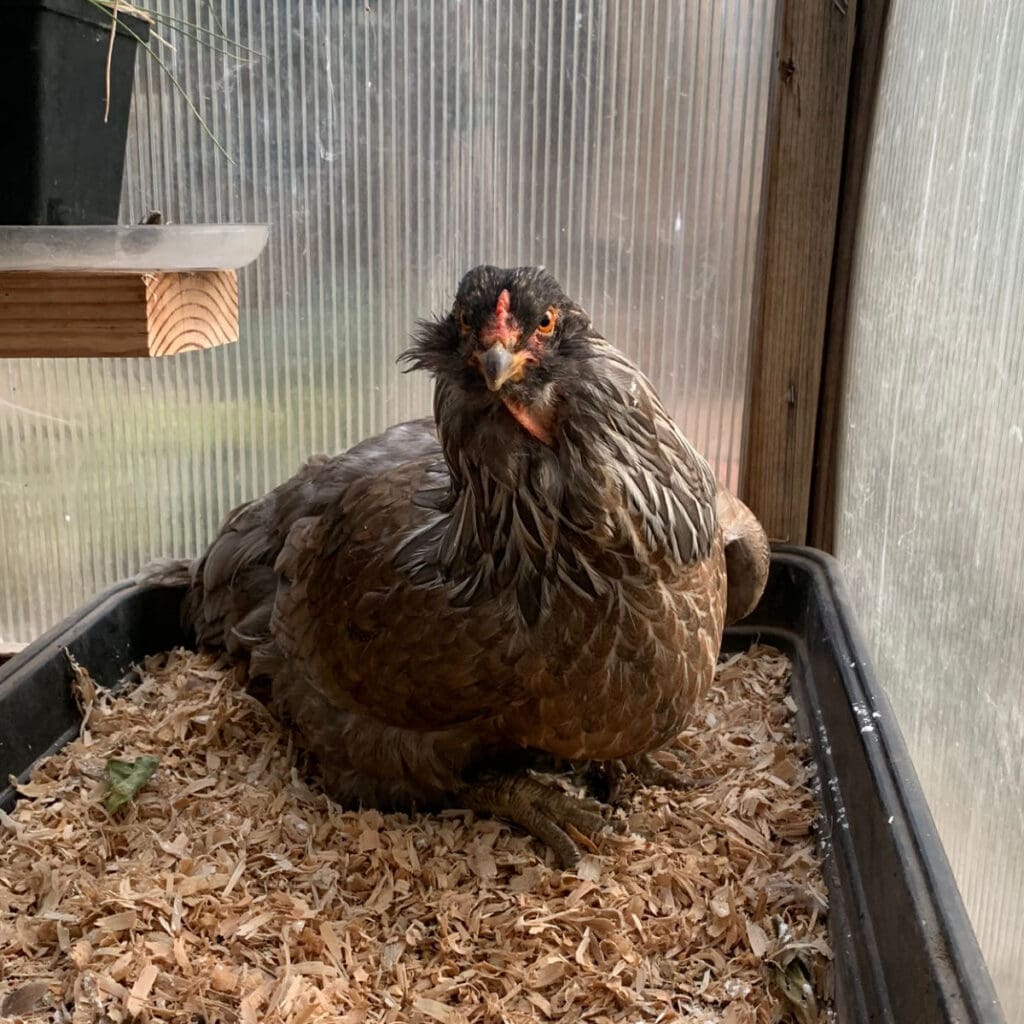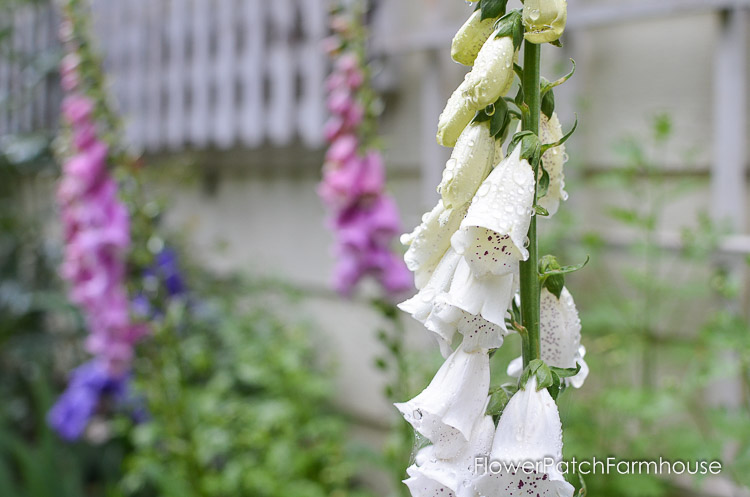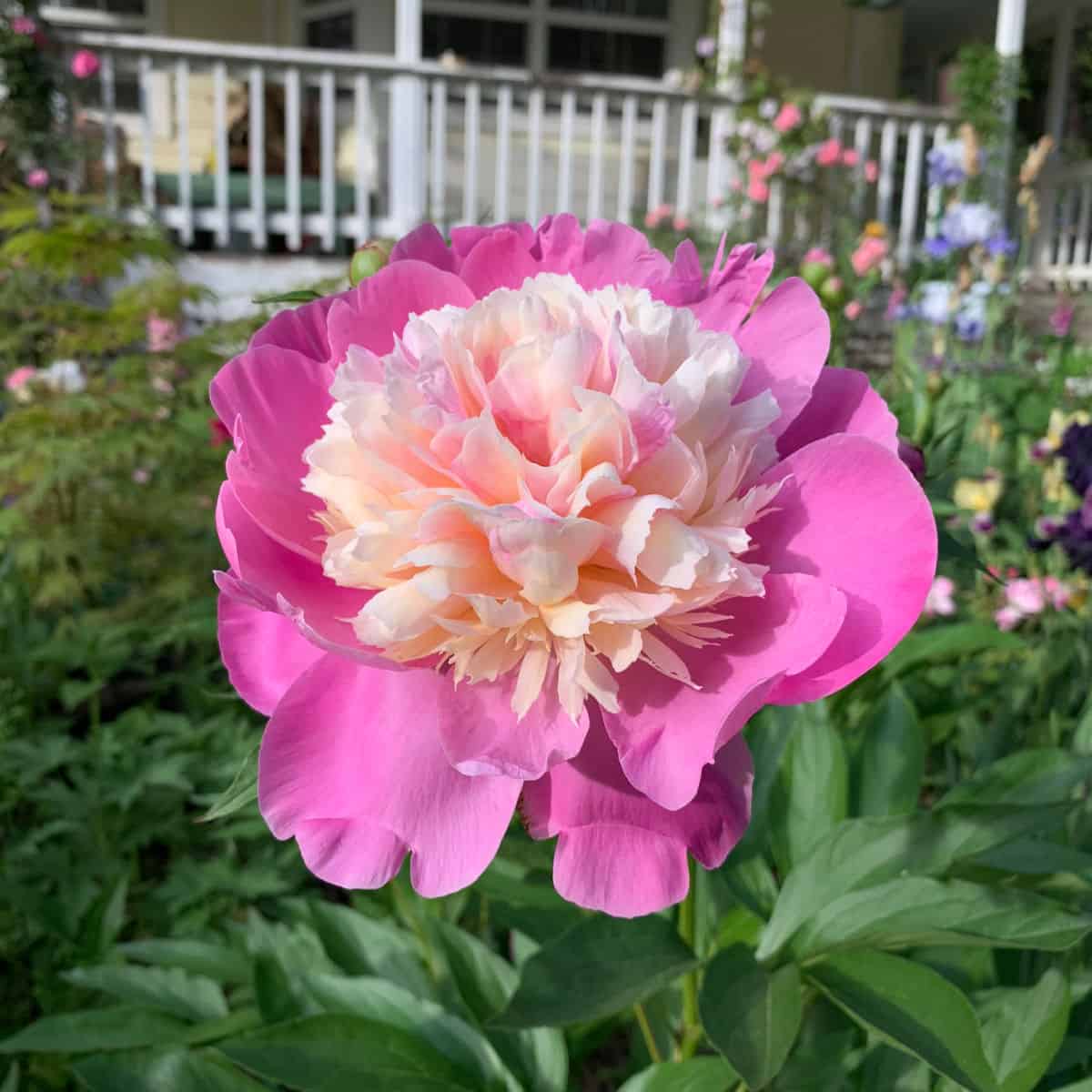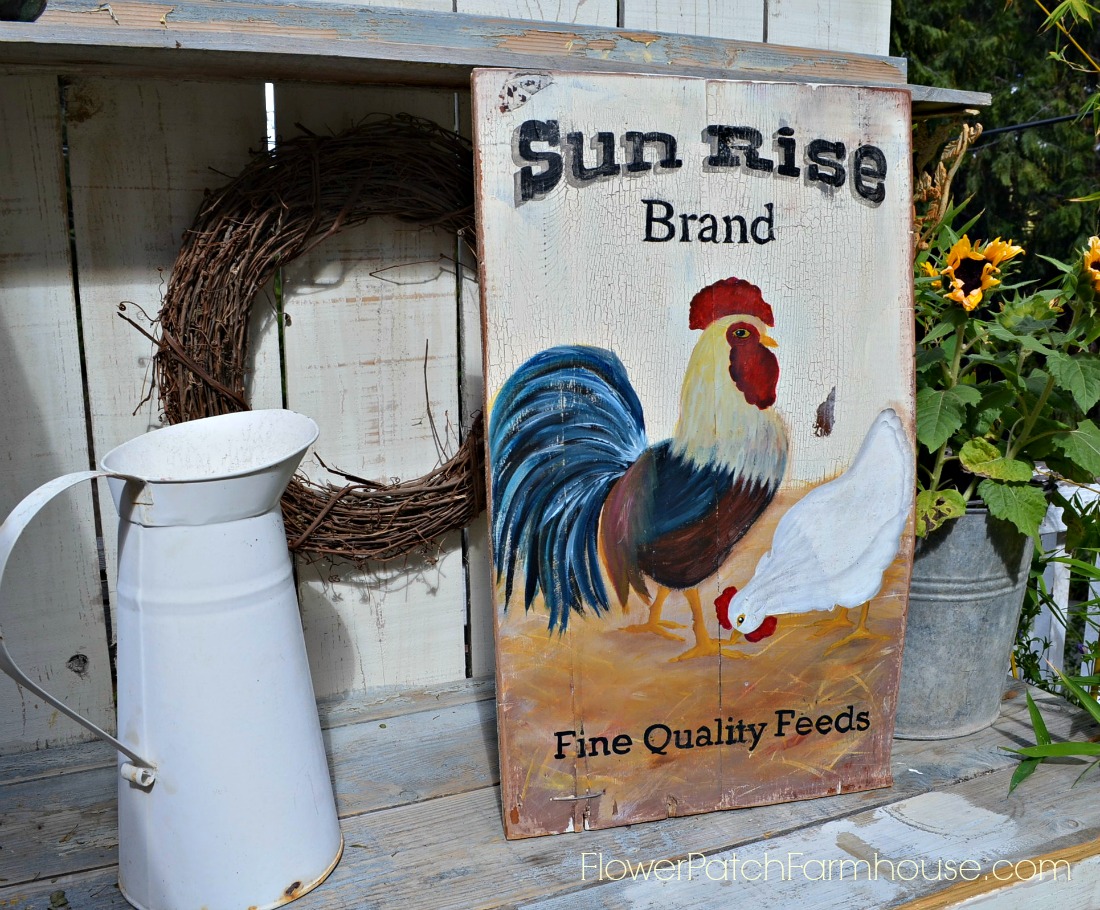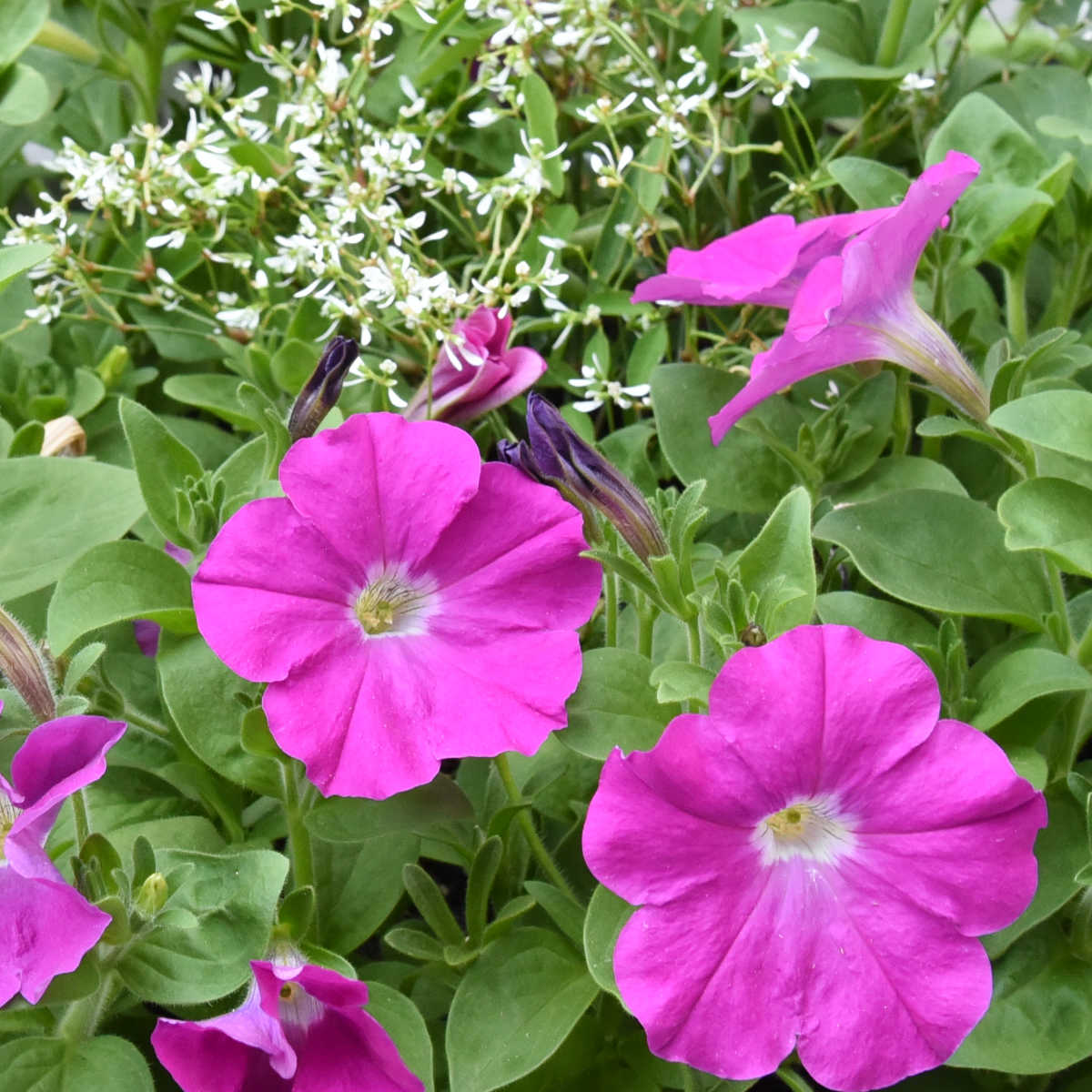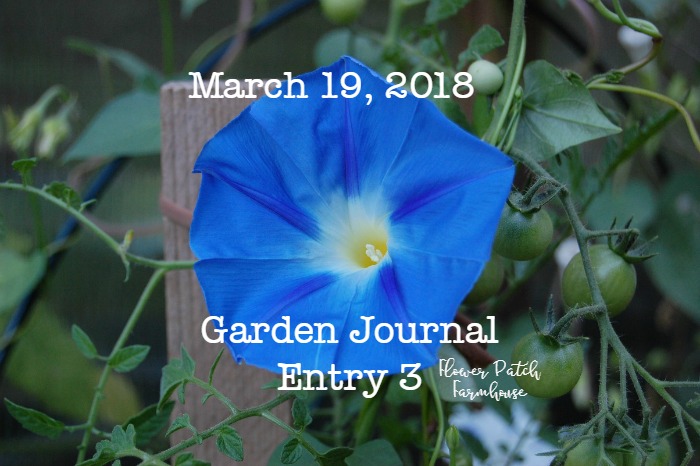Potato Bug
Dealing with Potato Bugs in Your Garden: A Complete Guide
If you’re a gardening enthusiast, you may have encountered a common pest that can wreak havoc on your potato plants – the dreaded potato bug.
Potato bug is also known as Colorado potato beetles or potato beetles, these insects can quickly decimate your potato crop if left unchecked.
But fear not! In this blog post, we’ll discuss what potato bugs are, how to identify them, and effective methods to deal with them.
Another pest called a potato bug is the Jerusalem Cricket but it is a different species as is the Woodlouse or Pillbug.
What are Potato Bugs?
Potato bugs are small, yellow, and black-striped beetles that belong to the family Chrysomelidae.
They are notorious for infesting potato plants and are considered a major pest in many potato-growing regions.
Female potato bugs lay bright orange-yellow eggs on the undersides of potato leaves, and the hatched larvae are known for their greedy appetite, feeding on the foliage of potato plants.
Colorado potato beetles, especially their larvae, will also eat other plants in your garden.
Anything in the Solanaceae (nightshade) family is a target, and they will quite happily munch on your eggplants, tomatoes, and pepper plants.
Identifying Potato Bugs
Identifying potato bugs is crucial to take appropriate action against them.
The adult beetles are about 3/8 of an inch in length, oval-shaped, and have yellowish-white bodies with black stripes on their wing covers.
Some describe them as yellow-orange with stripes but I have only seen the yellowish-white.
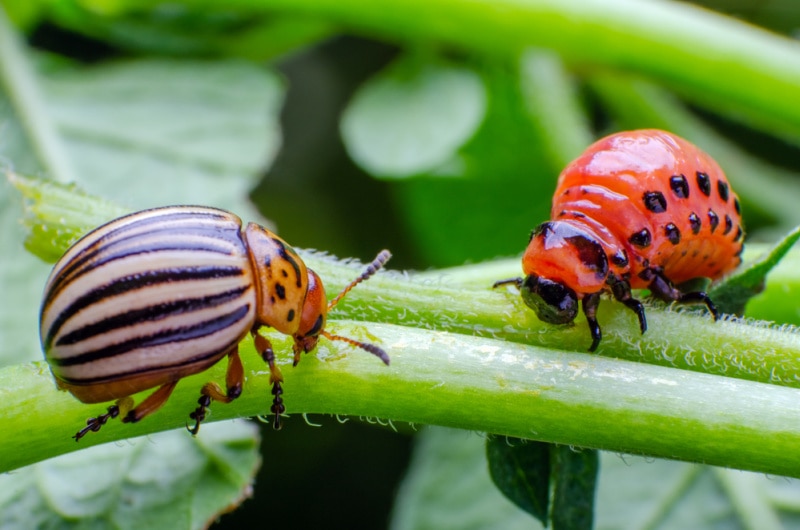
They also have distinctive black spots on their thorax.
The larvae, on the other hand, are plump, hump-backed, and reddish-orange with black spots on their sides.
Eradicating Potato Bugs from Your Garden
Handpicking
One of the simplest, most effective methods and earth-friendly ways to control potato bugs is handpicking.
Wear gloves and carefully remove the adult beetles, larvae, and eggs from your potato plants. (glove wearing is my preference)
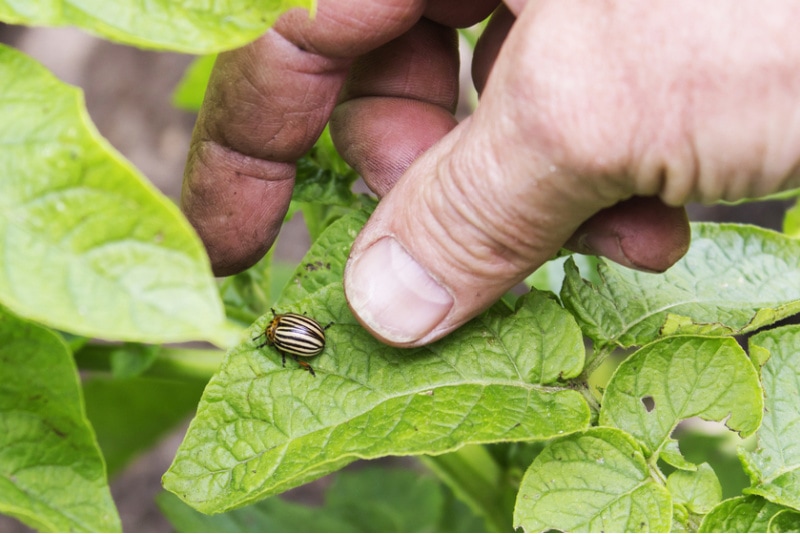
Drop them into a bucket of soapy water to kill them.
Be sure to check the undersides of the leaves where the eggs are commonly laid. They will cling to the leaves and need to be manually rubbed off.
Some have you shake the beetles into a bucket of soapy water.
Vacuuming- This is similar to handpicking in the sense that you have to manually search for beetles.
There are special garden “bug vacs”, or simply a handheld “Duster Buster” vacuum will do the job.
This is noisy but does work. It also works on other types of bugs, like Japanese Beetles.
Neem Oil
Neem oil is a natural pesticide that can be used to control potato bugs.
Mix neem oil concentrate according to the manufacturer’s instructions and spray it on your potato plants, paying special attention to the undersides of the leaves.
You can also find it ready to spray.
Neem oil works by disrupting the feeding and reproductive capabilities of potato bugs, effectively controlling their population.
Note: Just because it is natural and organic does not mean it is safe for use in your garden, it will also kill the beneficial bugs you want in your garden.

Companion Planting
Planting certain crops as companions to potatoes can help deter potato bugs.
For example, catnip, and tansy are known to repel potato bugs due to their strong scent.
Plant these companion plants with your potato plants as a natural deterrent.
Both of these plants are perennial and tough.
It has been found that the tansy or a nepeta (of which catnip is part of the family) must be planted in the same bed and not just around it.
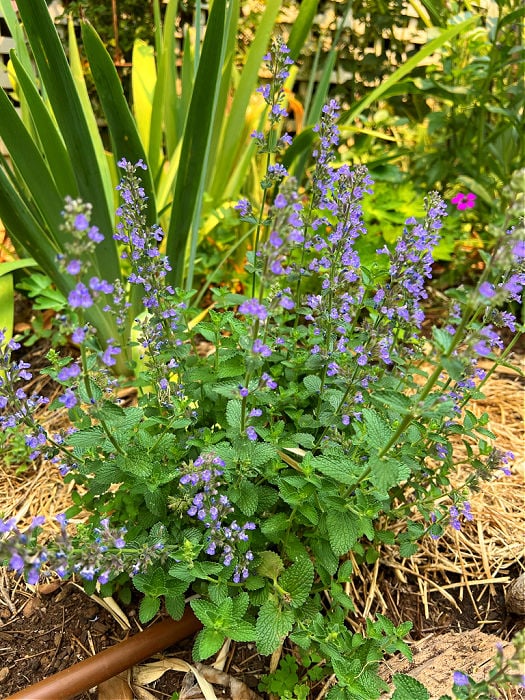
Coriander, dill, fennel, sweet alyssum, buckwheat, and cosmos will attract beneficial insects. (more later on beneficial insects)
Crop Rotation
Potato bugs can overwinter in the soil, so practicing crop rotation can help reduce their population.
Avoid planting potatoes in the same spot year after year and instead rotate them with other crops to disrupt the lifecycle of potato bugs.
The nepeta or tansy will need to be transplanted too but they are tough and can take it!
Mulching
Mulching can be an effective technique to inhibit potato bugs.
Use a layer of straw or wood chips around your potato plants to create a barrier, the adult insects don’t like to cross mulch barriers when traveling over the soil.
Natural Predators
Natural predators can be of great help in managing Colorado potato beetles. Lady beetles, birds, predatory stink bugs, ground beetles, parasitic wasps, toads, and lacewings will are natural predators of the eggs, larvae, and adult beetle.
Set your chickens loose (under supervision of course) on plants over a foot tall and they will fill themselves full of beetles and larvae.
get the details!
Gardening with Chickens
Gardening with chickens, yes it is possible. Everyone knows that chickens are great for providing us with eggs and making delicious dishes, but did you know that keeping chickens in your garden is actually good for it?
Buying beneficial insects like nematodes and the tiny parasitic wasp Edovum puttleri is also an option.
Prevention of Potato Bugs
In addition to dealing with potato bugs in your garden using the methods mentioned above, there are also preventive measures you can take to keep potato bugs away.
Here are some tried and true tips…
Use Row Covers
Floating row covers are possibly the easiest and best way to prevent Colorado potato beetles from getting into and infesting your crops.
Row covers are lightweight fabric covers that can be placed over your potato plants to physically block potato bugs from accessing them.
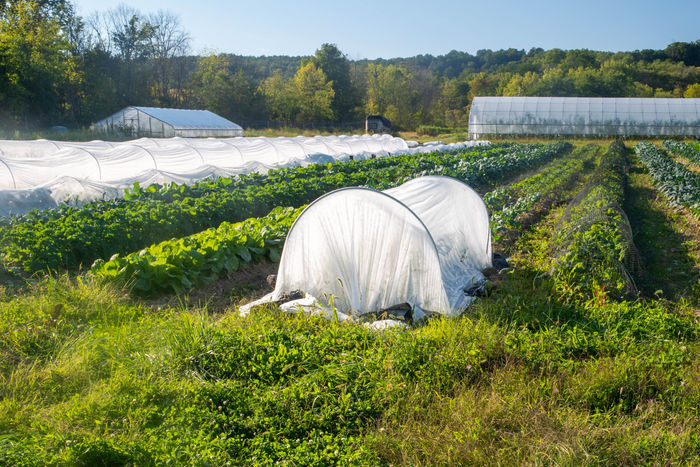
This can be especially useful during the peak season when potato bugs are most active.
Remember to secure the edges of the row covers tightly to the ground to prevent any gaps where the pesky bugs can enter.
Choose Resistant Potato Varieties
Some potato varieties are more resistant to potato bugs than others.
Look for potato varieties that are known to be resistant to potato bugs, such as Yukon Gold, Elba, or Dakota Pearl.
Planting resistant varieties can reduce the risk of potato bug infestations in your garden.
Monitor Your Garden Regularly
Keep a close eye on your potato plants and monitor them regularly for signs of potato bugs.
Check the undersides of leaves for eggs, larvae, or adult beetles.
Early detection is key to preventing potato bug populations from growing and causing significant damage to your potato crop.
Practice Timely Planting
Plant your potatoes at the right time to avoid overlapping with the peak period of potato bug activity.
Potato bugs are most active during warm weather, so planting your potatoes early in the season or later in the fall when the weather cools down can help minimize the risk of potato bug infestations.
Avoid Over-Fertilization
Over-fertilizing your potato plants can actually attract potato bugs, as they are attracted to the lush foliage that results from excessive nitrogen levels.
Follow regenerative gardening practices and avoid over-fertilizing your potato plants to minimize the risk of attracting potato bugs.
stop fertilizing
Feed the Soil Instead
If you’re new to gardening, you might think that the key to a thriving garden is to fertilize, fertilize, fertilize. Just stop, Regenerate the Soil instead!.
Potato bugs can be a nuisance in your garden, but with proper identification and timely action, you can effectively control their population.
Remember to use a combination of methods such as handpicking, companion planting, crop rotation, and mulching, to keep potato bugs at bay.
Remember to combine these measures with regular monitoring and timely action to effectively manage potato bug populations and protect your potato crop.
